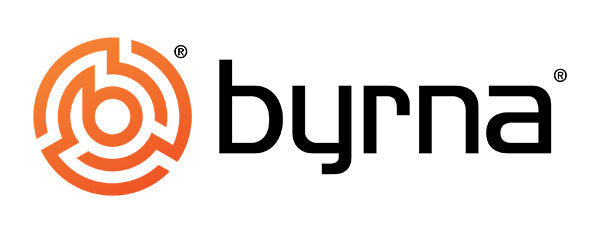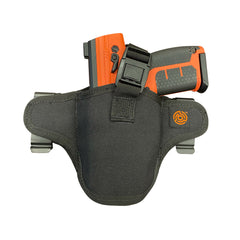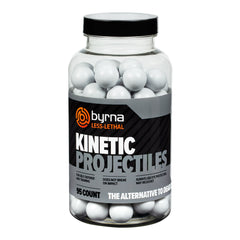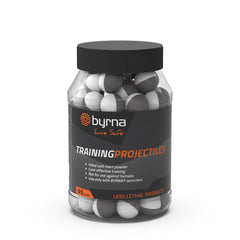When you travel with self-defense gear, it helps you feel more protected - especially when you might have to manage airport security. When you familiarize yourself with the TSA guidelines, you can pack your personal safety items without getting tangled up in tough rules so you avoid any problems. I always make sure to check what's allowed in carry-ons so I don't run into problems later on.
Sometimes, small facts help. Items might slip through security without any problems. However, others are more likely to raise problems as soon as security personnel see them. Protective objects can serve you well, and the easy rules let you pack more and feel even more confident!
Remember that your self-defense kit is only as helpful as how well it follows the guidelines. When you take a few extra minutes to review the TSA rules, you can boost your travel confidence (and help you get through airport checks without any problems!).
Let's get started!
Table of Contents
TSA Laws On Self-Defense Gear
Airports usually follow TSA rules about items you can bring. You should take a bit to check the latest guidelines before your trip so you know how to pack your self-defense gear and avoid surprises! The TSA gives a clear list of items and explains where to put them so it's easier for you to plan your packing.
When you're assembling your carry-on bag, remember that the rules can be strict. You basically can't bring pepper spray into the cabin and stun guns are off-limits. Even a small pocket knife could be taken away by security. Items like batons and brass knuckles plus most tactical pens are usually not permitted.
On the bright side, there are some self-defense items you can pack in your carry-on. Just to give you an example, personal alarms that emit loud sounds are normally acceptable. You'll find that most flashlights make it through security, even though especially bright ones might draw extra attention. Other items like empty water bottles or tactical gloves usually pass without an issue. Even something as easy as a rolled-up magazine could be an unexpected tool if you're in need.

For your checked luggage, you have a bit more flexibility with self-defense items. In your checked bag, you can pack pepper spray provided you follow a few rules. It should be in a container that holds less than 4 ounces. It also must hold no more than 2% tear gas by mass. It needs a safety cap so it meets the rules for controlled materials.
Stun guns can also go in your checked baggage, so make sure they're packed so they don't turn on during your flight. Knives, tactical pens, and even batons are usually allowed in checked bags, too. But tear gas and flammable sprays aren't. Finally, the TSA agent at the checkpoint makes the final call and may flag an item that seems dangerous even if it isn't on the banned list. What's accepted at one airport could be questioned at another. Also, if you're flying internationally, different countries can have their own rules for what's acceptable.
Sometimes, airlines enforce stricter policies than the TSA. Your destination may have laws that restrict items, which means it's a good idea to double-check with the TSA and your airline before you pack. A quick online search can save you trouble when you get to the airport. Once you have a handle on the guidelines, you can look at some travel-friendly self-defense tools that are usually accepted through security. That helps you feel more prepared as you plan your travel.
Allowed Self-Defense Items
When you carry some self-defense items on a plane, it can be easier than you might expect when you're aware of the rules. You can pack a personal alarm in your carry-on or checked bag without any issue. It's a tool to grab attention when you need help.
You can also think about a tactical flashlight. Those lights are built tough and shine brightly. They help you get through darker areas and might even be a warning if someone approaches you with malicious intentions. Keep in mind that if your flashlight is extra large or heavy, the TSA might get suspicious!
Travelers find that a tactical pen fits well into their carry-on and it writes just like any regular pen. It's made from sturdy materials. You should mention it during security checks so there's no mix-up. You can also carry self-defense keychains through security as long as they don't have sharp points or blades or anything that looks like a weapon. Those tools double as a door opener and bottle opener that can add some extra practicality.
Pepper spray is another idea, though it comes with strict requirements. You can only pack it in your checked luggage. The container has to be 4 fluid ounces or smaller with a safety cap to stay away from any accidents in flight.

Even an empty water bottle might surprise you - steel bottles can be used as a defensive item. You can pass through security with it empty and fill it up later. If needed, a sturdy water bottle can be an improvised defensive tool. Just make sure they're empty when you pass through the scanners.
Because TSA officers make the final call at checkpoints, what's acceptable one day might raise some problems another day. Different airports sometimes enforce rules differently, so you'll do yourself a favor by packing permitted items to stay away from any problems. The stricter rules and screening process for your carry-on bag deserve a look because what works in checked bags might not be allowed there.
Carry-On Restrictions And Screening
When you travel, it can sometimes be a real challenge to handle your self-defense gear with what you bring onboard. Airlines have set clear rules, so if you bring pepper spray, stun guns, or tactical pens, you might have to hand them over to security! They do this to make sure everyone stays safe during the flight.
TSA uses X-ray machines to check your carry-on bag. They might also look through your bag by hand if something seems off. This usually means you'll need to take out your electronics and liquids. Sometimes you'll even need to remove your shoes so they can be scanned separately. While this process can be somewhat invasive, the officers are basically following steps to keep you safe.

The rules are in place because a small airplane cabin leaves little space for someone to respond if there's an issue. Even if an item seems harmless to you, it could be seen as a possible threat in a confined space. Sometimes, you can pack self-defense items in your checked baggage instead. Just to give you an example, you can usually pack a small container of pepper spray in your checked bag if it helps keep you safe. Some airlines even permit stun guns in checked luggage, though it's always a sensible idea to check the policy before you fly.
When you plan ahead, it can help smooth out the screening process. Try to pack your carry-on neatly and stay away from overfilling it. Place your liquids in a clear bag so the security team can see them. You might want to have items like belts or jackets ready to be removed when you reach the checkpoint. If you're carrying any medical devices, letting TSA know ahead of time makes things easier.
If security finds an item that's not allowed, you usually have a few options. Just to give you an example, you could put it in your checked bag or mail it to yourself or leave it with someone who isn't traveling. Usually, you'll need to leave the item behind.
If the standard screening process makes you feel uncomfortable, you can ask for a private screening. TSA officers see travelers each day and are familiar with your problems. When you have a friendly attitude, it can help smooth things out for everyone involved. Once you've navigated the carry-on rules, you can turn your attention to finding the best way to safely check your gear.
Checked Luggage Compliance Rules
When you're getting your self-defense gear ready for a trip, you have to make sure you pack some items in your checked luggage and leave others out. You want to pack any unloaded firearms in containers that are locked and hard-sided so they remain protected. You also need to let the airline know about any guns you're taking along when you check your bags.
If you have ammunition, it's best to pack it in boxes made specifically for bullets instead of tossing it loose into your suitcase. Keep in mind that airlines might limit the amount you can pack, so it pays to double-check their guidelines.
It's also fine to pack a small container of pepper spray in your checked bag. Just make sure the container is no bigger than 4 fluid ounces. It needs a built-in safety feature to stop any accidental spraying and no more than 2% tear gas. With those stun guns, the safest strategy is to place them in hard cases so they and the baggage handlers remain protected during travel.

You should pack tactical pens and credit card knives in your checked bags instead of your carry-on. Items that are standard and sharp like knives and scissors do best in checked luggage when they're covered or wrapped.
Not every self-defense tool will work for checked luggage. Just to give you an example, steel batons are also called asp batons and aren't allowed. Self-defense sprays with more than 2% tear gas are off-limits in all types of luggage. It's always a helpful idea to review the rules for your destination before you start packing.
You can usually bring personal alarms in either your carry-on or checked bags since those devices are small and electronic, so they come with fewer restrictions. Tactical gloves usually fall under the same category and are acceptable in either type of luggage. Remember that rules can change between airlines and countries, and sometimes, airline policies can be stricter than those of the TSA. What works at home might present challenges elsewhere, so it's smart to do a bit of research before your trip. That extra research can make your airport experience smoother and help you avoid unexpected problems.
Self-Defense Alternatives For Travelers
When you travel, you'll quickly learn that standard self-defense items just aren't allowed in the cabin. That's why you might want to remember some TSA-approved options that help you feel safer while still following the rules. Tactical flashlights are built tough, just as one example. They can give you a bright beam that can temporarily disorient someone who might cause you an issue. You can carry them without drawing any extra attention because they basically look like tools for any situation.
Personal alarms work well, too. You attach one to your keychain or bag. When you need it, the alarm sounds off at over 130 decibels - loud enough to startle anyone trying to sneak up on you! They're small, so they're simple to use. You'll feel more protected once you find that help is a sound away.

You might also make use of something as easy as a metal water bottle. Besides keeping you refreshed during long journeys, a sturdy water bottle can be a protective tool if you ever need it. And you can bring one on board after passing through security, which makes it a flexible travel friend.
Tactical pens could be another item worth adding to your travel kit. They look just like standard pens. But they're made from harder materials that can double as a means of protection. Travelers like having an object that serves a dual role without standing out in their carry-on bag.
Another device to remember is S.O.S. jewelry. If it's a bracelet or a necklace, each piece lets you send out an emergency alert with your location through your smartphone connection. They blend in as standard accessories, which means you can look beautiful and keep an eye on your safety.
When you slide door-stop alarms under your hotel room door, you might find them helpful. If someone tries to get in, the alarm will start off immediately. They're small and a nice choice for air travel. When you take a bit of time to review this list before you pack up, you might find that adding one or two items can give you some extra security while you're on the road.
Protect Yourself and Your Family
When you plan a trip, taking a few extra minutes to check what you can pack can pay off later at the airport. You might not know that some self-defense items need handling until you're standing at the security checkpoint. That can give you some unnecessary stress - or even force you to leave behind something necessary.
Taking time to be sure everything you pack is acceptable at your departure and arrival destinations is worthwhile. Rules can change from one location to another, so spending a little time looking over the latest guidelines is helpful. When you do this easy check now, it could save you from problems, extra costs, and stress when you travel.
Your safety really matters every step of the way, whether you're at home or on the move. While some common self-defense tools have to be checked or might need to stay behind, there are still ways to feel protected on your trip! Personal alarms, tactical flashlights, or even items you use every day help you stay safe without breaking any rules. Think about which alternative methods might work for you.

If you like to stay away from traditional firearms for protection, you can look at our options at Byrna. We have less-lethal tools that you can use legally in every state, and you don't even have to go through a background check. Our pull-pierce CO2 system gets you ready faster when you need it most. We have a number of options like pistols, rifles, and even backpacks equipped with extra safety features. All Byrna Launchers are able to be checked into your luggage when flying, just make sure you remove all CO2!
Visit Byrna.com to learn more and see why travelers trust our products for an added measure of security on their journeys.




